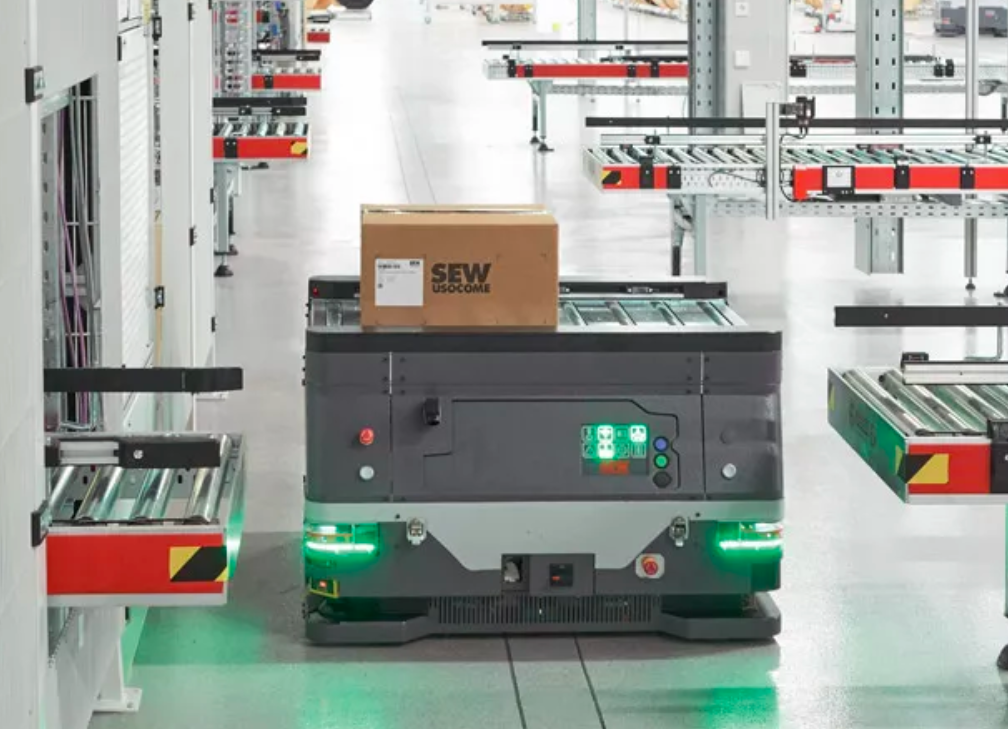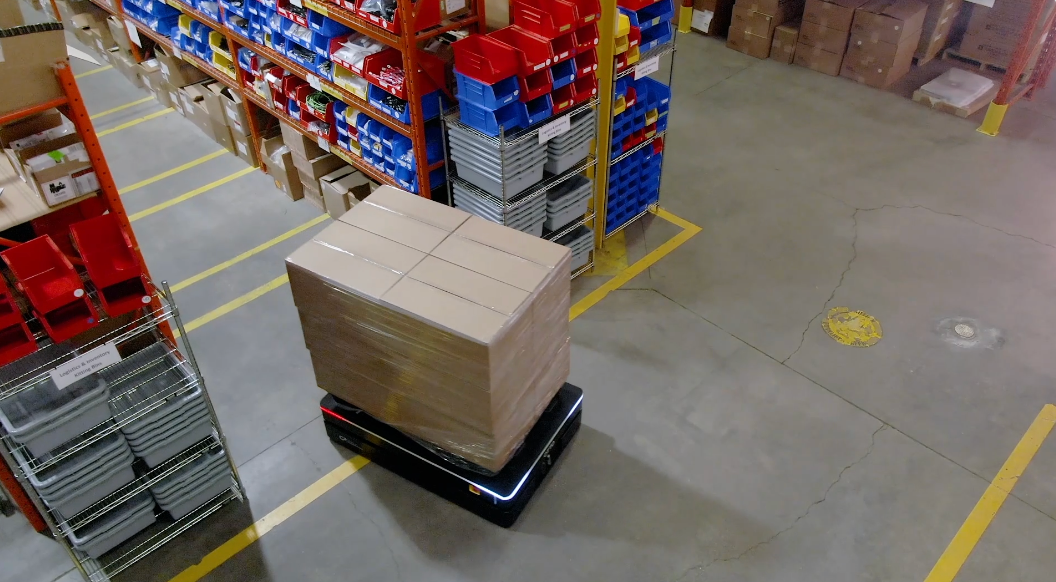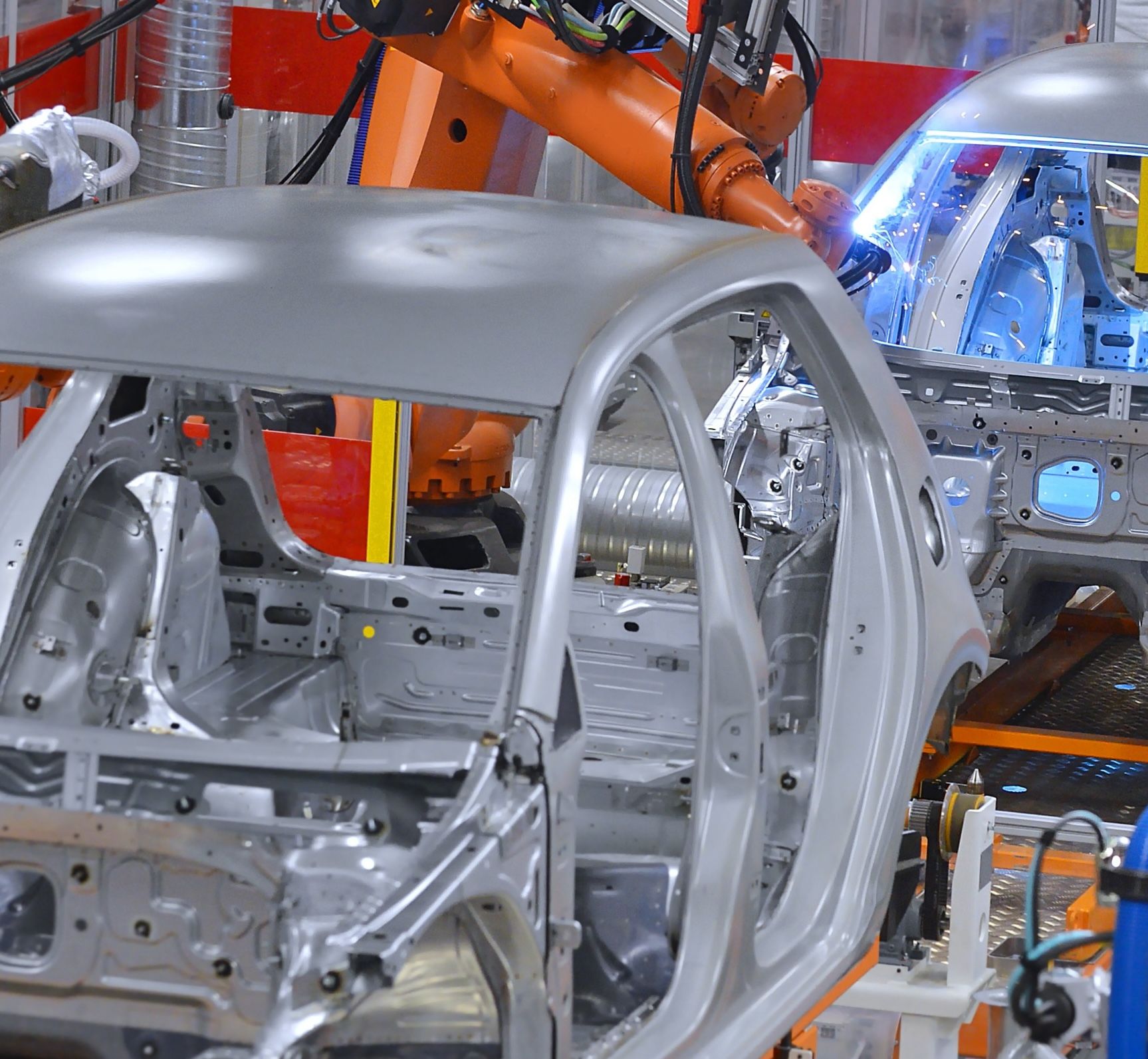Blog
Optimizing your material movement strategy with AMRs: 4 questions to explore

In today’s warehousing landscape, flexibility is essential
The warehousing industry is changing at a faster rate than ever before. Pressures like labor shortages, changing product mixes and demand fluctuations have put a strain on the industry, often resulting in bottlenecks or costly downtime. As a result, leaders are seeking ways to move materials differently—ways that enable them to adjust to the realities of less available staff and more demand variation than in years past.
The clear trend is towards flexible material movement. Facilities are shifting from fixed to more flexible material movement approaches, investing in systems and equipment that can more easily adapt to the unpredictable demand and shifting fulfillment needs of today��’s dynamic economic landscape. While several technologies—including independent cart conveyance technology—can enable flexibility, autonomous mobile robots (AMRs) are currently in the spotlight thanks to the unique advantages they offer.
AMRs could be the key to more flexible material movement in your facility. In this article, we’ll propose four questions to explore as you evaluate whether AMRs might fit into your material movement strategy.
1. What are AMRs?
Autonomous mobile robots, or AMRs, are intelligent, self-driving vehicles capable of making real-time decisions in complex and dynamic environments. Unlike other robots—such as some AGVs (automated guided vehicles)—that may follow a fixed path guided by QR Codes or magnetic tape, AMRs move independently. Using sensors, cameras, and advanced algorithms to make sense of their environment, AMRs generate their own paths and independently detect and avoid obstacles. This self-navigation capability allows AMRs to be more flexibly deployed than other material movement robots with fixed infrastructure, such as conveyors, making them ideally suited for today’s rapidly changing warehousing landscape.
2. How can AMRs add value to your current operations?
Since these flexible AMRs aren’t on a fixed navigation path, enterprises can easily adjust AMR material movement workflows as operational needs change. Using AMRs in multiple applications unlocks new workflows for material handling automation. For example, a forked AMR could be used for lane clearing and dock-to-dock transport, while flatbed AMRs are ideal for lineside delivery and finished goods takeaway. This flexibility also extends across facilities by sharing AMRs among different facilities and redeploying on demand.
AMRs also improve a facility’s overall productivity. They operate continuously, resulting in steady material flow. AMRs can also dynamically adapt to their environments in real-time, making them a better choice for demanding applications. They use self-navigation to detect, avoid and move around obstacles, so they continue to their destination without interrupting material flow. Intelligent navigation also enables AMRs to optimize movement patterns. AMRs determine which routes are fastest and predictably take optimal paths, even within unpredictable environments.
Start your material handling journey by piloting one or two AMRs to see their value in action and generate internal excitement for the automation initiative. When you decide to scale and deploy AMRs as a fleet, their benefits increase exponentially—enabling you to improve workplace safety, optimize material flow and fill labor gaps across your entire facility. Assigning AMRs to repetitive tasks allows warehouses to optimize workforces by shifting human employees to more valuable key decision-making roles. This increases operational efficiency and frees up human employees so they can better use their unique skills and talents. AMRs can also improve employee safety by reducing manual touchpoints and the risk of employee injury. In today’s tough hiring market, deploying a fleet of AMRs enables a facility to stay operational despite a lack of human labor and to simultaneously drive operational improvements.
3. What is the role of fleet management software in AMR deployments?
Fleet management software is key to optimizing AMR-driven material movement, equipping facility operators with a powerful toolkit for AMR management. This software coordinates the right robot for the right task at the right time, configuring traffic rules on a centrally managed map that is distributed to all robots in the manufacturing facility. Fleet management software is also the connection point for facility integration—instructions from ERP, WMS or MES systems are transferred to the fleet via fleet management software, enabling AMRs to perform material transfers with facility equipment. Robust fleet management software will have a strong data and analytics tool that can help you analyze the system, proactively identify risks and optimize your material flow. The solution should also have elegant dashboards to help you keep tabs on the health of your system in real-time—from visualizing KPIs at a glance to spotting bottlenecks and drilling down into specific robots or actionable tasks.
4. How can AMRs fit into your digital strategy?
AMRs are powerful sources of data within your digital operations. Real-time AMR performance data enables operators to visualize material flow inefficiencies at a glance. This data can then be analyzed to drive facility-wide improvements. By integrating AMR data with your facility and enterprise systems, you can gain greater operational visibility and optimize end-to-end performance.
Enhanced operational visibility can help you identify actionable ways to improve material movement. For example, you may discover that urgent tasks aren’t getting completed on time and use telemetry data to improve order prioritization. Or you may notice robot bottlenecks are happening frequently in certain places—in that scenario, advanced analytics could indicate ways to reduce congestion and return to planned throughput.
Combining data from AMRs and the rest of your facility can also inform end-to-end performance optimization across your broader operations. For example, you could construct a digital twin of your facility, allowing you to try out different approaches with zero risk and find ways to make small changes with a large impact. You could also experiment with different AMR routing options so that if there is a robot failure, operations can continue to run smoothly. No matter your goal, including AMRs in your digital strategy gives you the rich insight to determine what works best for your facility.
Rockwell Automation can help
Flexible material movement is a necessity—the question is how to get there. In this article, we’ve explored how AMRs could be the answer. And in fact, while AMRs were considered cutting edge technology only a few years ago, they are now increasingly becoming the go-to choice for facilities looking to improve flexibility thanks to their ability to deliver proven results. Increased flexibility with AMRs has allowed Mauser Packaging Solutions to increase the AMR throughput by six times (6x) compared to their legacy AGV system. To learn more about the safety and productivity benefits AMRs have generated for manufacturers, visit this webpage.
With the most comprehensive AMR fleet in the industry, OTTO Motors by Rockwell Automation helps warehousing leaders find and implement the right AMR solution for their material flow needs. For those seeking broader digital solutions support, experts from Kalypso, a Rockwell Automation business, can help develop end-to-end solutions that meet performance goals.







